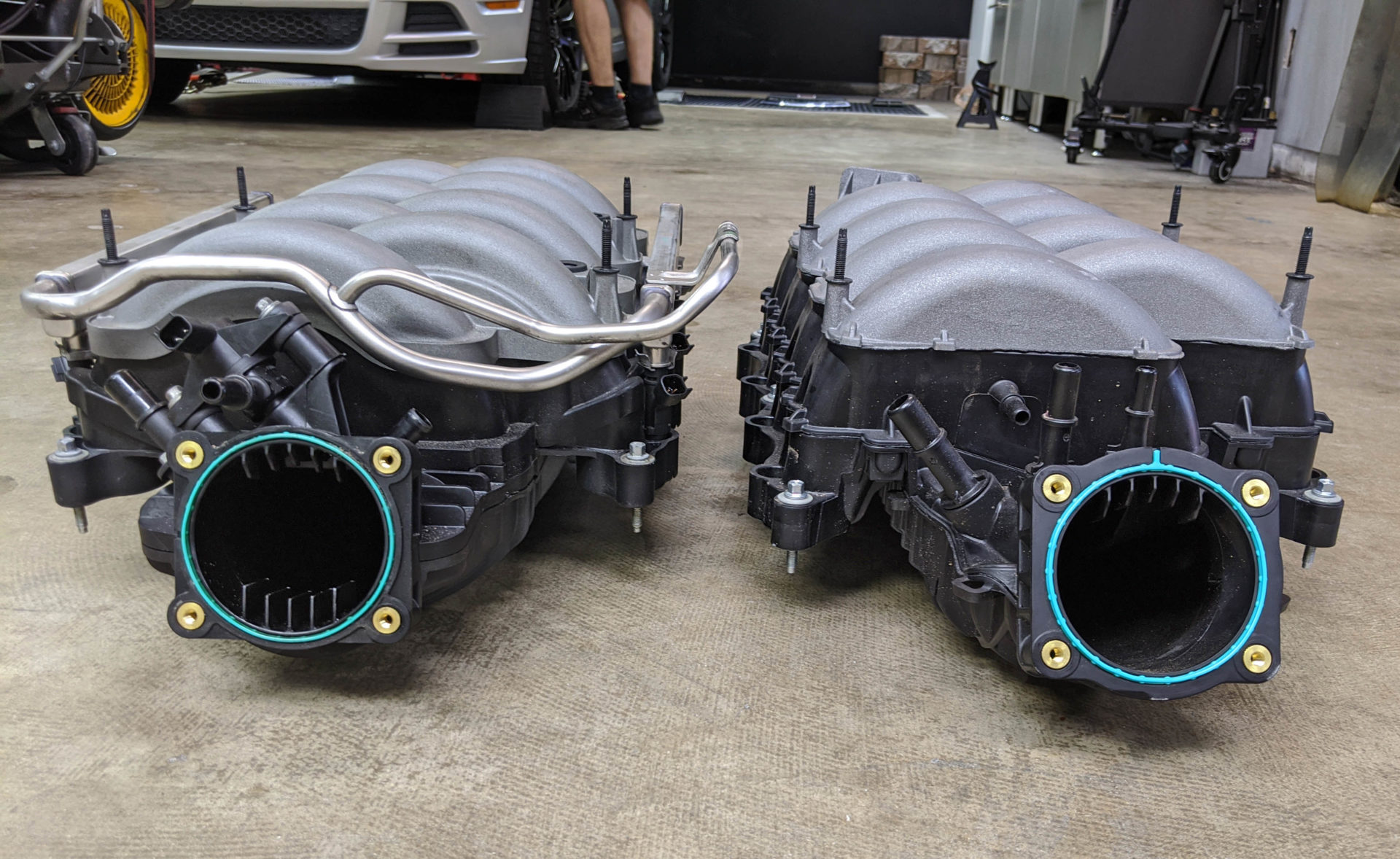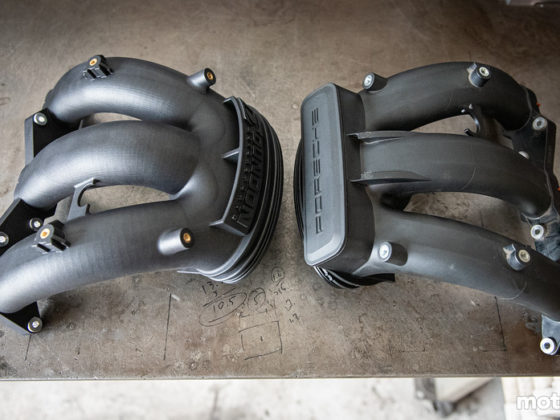
With the manifold installed, we can start plugging everything back together. To the untrained eye, it looks just like stock.

The Vacuum lines are quite a bit different on the 2018+ Gen-3 manifold. That top, horizontal port isn’t used and does not need to be plugged up.

The stock Gen-1 throttle body bolts right up to the new manifold, but the wires for the EVAP system are a little tight.

We had to replace two of the main vacuum lines with silicone hoses, but the install looks pretty clean.

With the new 2018+ Gen-3 intake manifold installed, and the K&N Performance Air Intake System back on, we were excited to see what would happen.
Quick Reference:
Page 1 – Baseline Dyno
Page 2 – K&N Performance Air Intake System
Page 3 – K&N Intake Install
Page 4 – K&N Intake Dyno & 2018+ Intake Manifold
Page 5 – 2018+ Intake Manifold CMCV Delete and Stock Manifold Removal
Page 6 – Stock Gen 1 vs Gen 3 (2018+) Manifold Comparison
Page 7 – 2018+ Manifold Install
Page 8 – 2018+ Manifold Dyno & Tune




10 comments
Would it make sense to attempt a bit of port matching to accommodate for the larger ports on the manifold. It doesn’t appear to be a huge difference, but hitting that hard edge on the heads is definitely disturbing air flow.
I guess the big unanswered question is would the same tune time get you 400hp with the old manifold minus the torque loss. Doubt you would get a peak that matches, but the area under the curve might be more useful on a track car.
Stay tuned for Part 3 where we answer that question.
and here I was all excited to read about panhard bar benefits over watts link…
Stay tuned for the article that tackles the suspension.
Love it.
Awesome testing! Based on what I saw on Project S2000 with testing of the airbox lid on vs off, I mean, you and I know you’ll see similar on the Mustang. But it’s always great to see the real data, so I’m excited to see it! I always love seeing the data you present.
As much of a Mustang fan as I am, certainly a 4th gen F-body with a cam and exhaust is a cheaper ticket to 400whp.
I just looked into it and it doesn’t seem like a cam and exhaust can make 400whp on an F-body. Even if it does, this is “Budget 400whp TRACK CAR” and it would cost far more to make an F-body competent on road courses 😉
Great information,I can’t wait to see the third article.